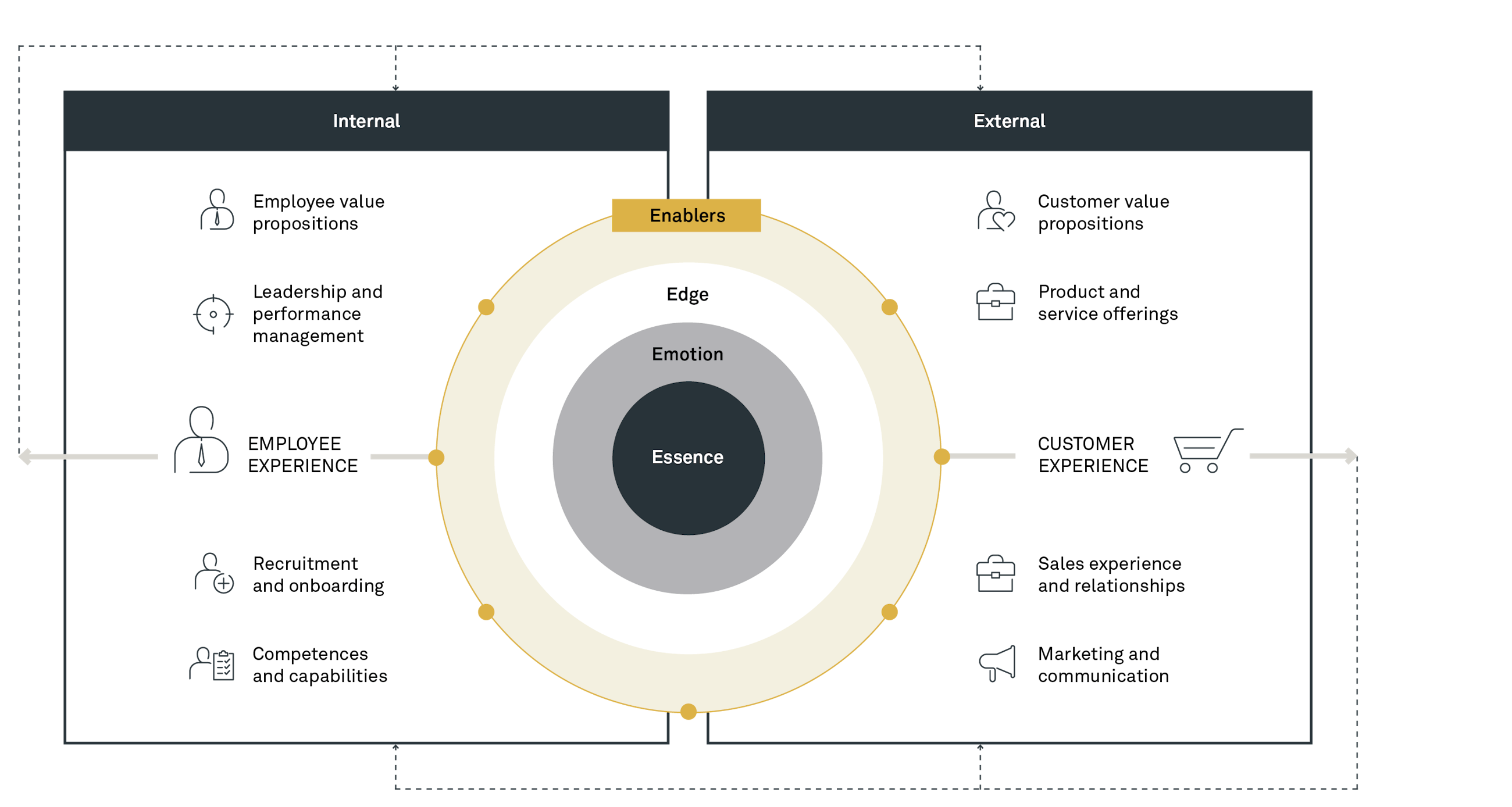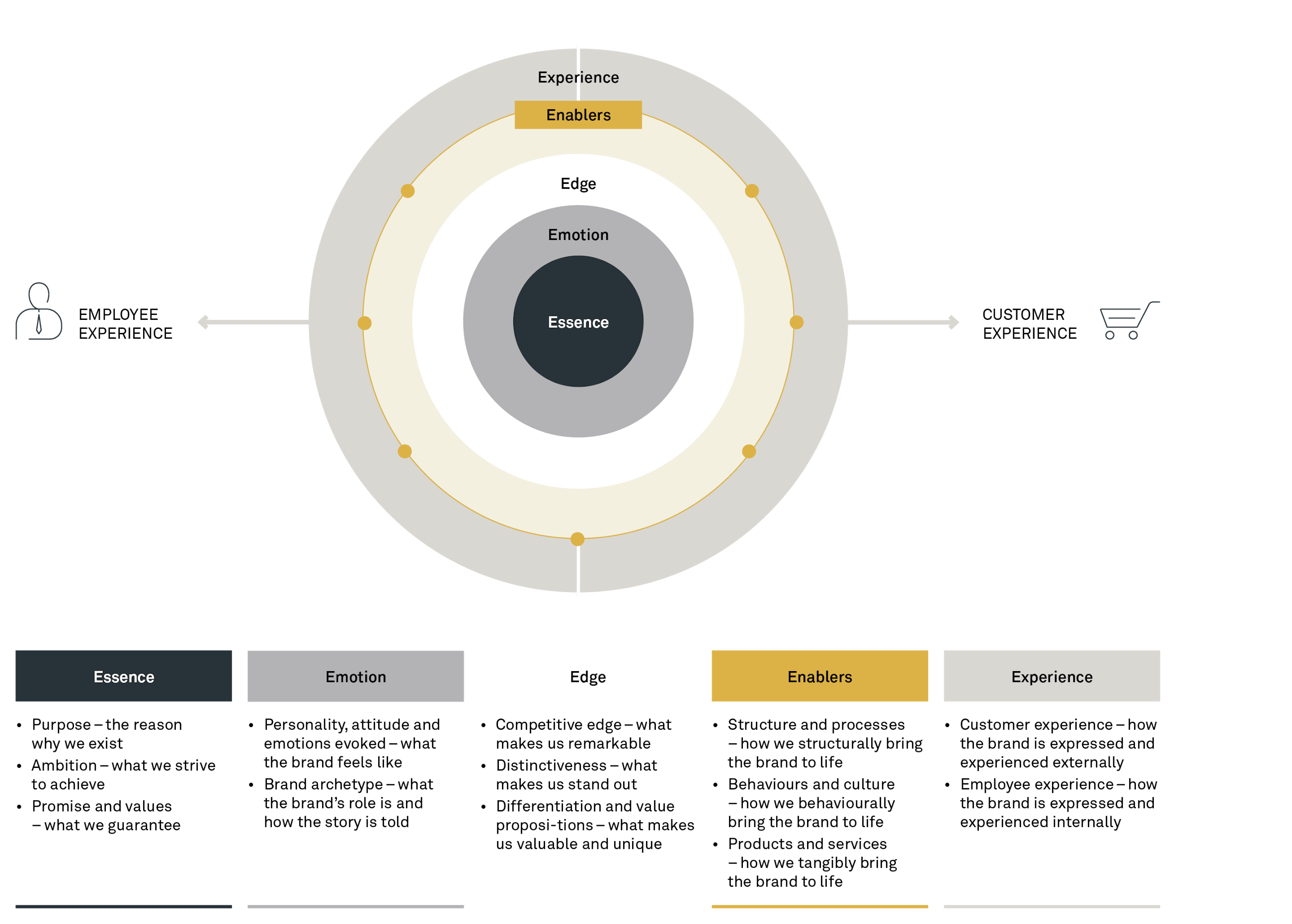An organisational philosophy that provides agility through stability in a fast-changing world
14 November 2017
"It is not necessary to change. Survival is not mandatory."
The words of W. Edwards Deming are a haunting warning call for both business and individuals. To not only survive but to thrive in a complex environment demands adaptability and change.
But change is difficult. Especially when consistency is so highly valued. How can you deliver a consistent customer experience if the world is constantly changing? How can you instil trust when the world is a fundamentally different place today than it was yesterday? And how can you attract and retain customers and employees when their needs are continuously in flux?
There are many answers. But an unexploited one is the brand.
The brand is more than just a marketing and advertising activity. Under the right conditions, it can engage employees and customers. It can power strategy. It can align decision-making and behaviours. And it can provide meaning for employees and customers alike.
But to recognise the full potential of the brand, it must be lifted to a higher realm than marketing and advertising. It needs to be placed where it rightly belongs – at the heart of business strategy. Only then can it provide direction. And only then can it provide agility through stability.
This approach is called brand orientation.
What is brand orientation?
Brand orientation is a management philosophy that places the brand at the heart of the organisational decision-making. In a brand-oriented company, everything it does, both internally and externally, is informed by the brand. Everything from products and services to the recruitment policies and the office layout – it is all designed to express and reinforce the brand.
At first glance, it might sound as if brand orientation is incompatible with customer centricity. If the company primarily revolves around the brand, does that not mean that the customer is secondary? Not at all. In brand-oriented companies, the brand is built upon a purpose – an answer to the question of why the company exists, and what it wants to achieve. A brand purpose is more than just a goal of achieving a certain size or market share. A strong brand purpose is centred on making a difference for a group of people, improving something for them, somehow.
This means that customer centricity is built into the heart of the brand. If everything the company does revolves around a purpose, then everything the company does will be about fulfilling that purpose for the defined target group.
Brand orientation’s effectiveness comes from the alignment it achieves between the internal and the external realities of the organisation – between employees and customers. Placing the brand purpose at the core of organisational decision-making gives employees a central, lasting idea that guides their actions. If everyone’s decisions revolve around a common idea and purpose, then everyone has a common vantage point from which to deliver a consistent customer experience.
Brand orientation brings the brand and purpose to life by enabling and operationalising it. The brand is deliberately expressed at every touchpoint in the customer experience and in everything the company does internally in the employee experience. People are recruited based on it, the internal culture and ways of working are built upon it, and people are rewarded based on it. The brand becomes the blood that flows through the veins of the organisation.
What are the benefits of brand orientation?
Studies have shown that brand orientation is related to higher brand equity and gains in financial performance. But few companies are truly brand-oriented, and that is because it demands a completely different organisational mindset. For the ones who do succeed, here are some of the benefits that follow.
Consistency and alignment – from experience to the core
Consistency is key for brands. A brand is the sum of all associations of a company. Therefore, it becomes the collected set of expectations of the next encounter. The degree to which the company delivers on those expectations becomes the brand’s reputation. Living up to that reputation – being consistent and reliable, and thereby trustworthy – is what makes a brand strong.
As a company grows, so does the difficulty in maintaining consistency. A growing business means more customers to satisfy, more employees to control and more touchpoints to cover. In today’s day and age, this means new technologies to adopt, new customer needs to address and new digital experiences to provide. In this environment, it’s impossible to deliver a completely consistent experience. That is why brand orientation focuses on consistency and alignment in the brand core instead – the purpose, beliefs, values and principles that form the heart of the brand.
Elon Musk, Founder and CEO of Tesla and SpaceX
By aligning around the brand core, brand orientation allows for flexibility in the customer experience. After all, a tightly defined experience can easily become a straightjacket in unforeseen situations. To counteract this, brand orientation provides employees with a set of commitments or principles to adhere to. Within the boundaries of those principles, they are free to take care of the customer as the situation demands. The days of the “brand police” with rules, policies and strict guidelines are over.
Marketing and brand legend Norman Berry advocated for the “freedom of a tightly defined strategy”. Brand orientation achieves just that. It is a core belief and a set of tightly defined ideas that are never compromised on and that provide a direction. But within that defined space, there is the freedom, flexibility and empowerment to customise when necessary. Agility is created from stability.
Differentiation and distinctiveness – from features to DNA
Differentiation and distinctiveness are at the heart of marketing. If you can define and communicate what you do better than the competition, by how much, and in a distinctive way so that you stick out from the crowd, then the customer has a very compelling reason to choose your offering.
Brand orientation helps to achieve differentiation and distinctiveness by incorporating uniqueness into the core of the brand itself. A brand-oriented company revolves around a set of ideals, purpose and values that are unique to the organisation. In many ways, it is the DNA sequence of the company.
This unique combination of concepts that form the heart of the brand cannot be replicated. Since all decisions are informed by the core of the brand, then all decisions will, in diverse ways, express that uniqueness. Differentiation then becomes more than just a sales and marketing feature. It becomes an integrated part of the whole organisation’s way of working. This common foundation of uniqueness then frees up sales and marketing teams to focus on translating it into targeted and customer-specific value propositions.
Emotional connection – from needs fulfilment to real fulfilment
Competing for talented employees is a timely issue for business leaders. A recent survey of more than 1,300 global CEOs showed that 77% struggle with a lack of people with the right skills. They claim that the availability of talent is the biggest threat to their business.
To meet this challenge, many companies focus on building an attractive “workplace culture” by offering Ping-Pong tables, free lunches and casual dress codes. While these initiatives are not harmful, they do not sustainably differentiate the company in the battle for skilled employees. Anyone can buy a Ping-Pong table, after all.
So how can an organisation appeal to top talent in a differentiated way? The answer is to provide meaning. This might seem like a big, hairy concept to grasp. But it simply comes down to helping employees to experience a meaningful reason for why they do what they do.
Jeff Bezoz, Founder and CEO of Amazon
Being purpose-driven provides meaning to employees, under certain conditions. Firstly, for employees to experience meaning they also need to believe and identify in the same purpose. If they cannot identify with the cause, then it will not resonate, and it will not motivate. Secondly, employees need to experience a sense of contribution to that cause. If they cannot see how they play a role in fulfilling the company’s purpose, what possible meaning can they gain out of that? Thirdly, the sense of meaning needs to be shared by the rest of the employees. Meaning is created in connection with others – that is when meaning actually means something.
This need for purpose and meaning has not been lost on Generation Y and millennials. A recent survey found that “sense of purpose” was the strongest predictor of retaining millennials for more than five years. “Emerging leaders are looking for one thing above all else in a career: purpose,” says Liz Maw, President of Net Impact. Amazon’s founder and CEO Jeff Bezos emphasises the point, saying that, “I strongly believe that missionaries make better products. They care more. For a missionary, it’s not just about the business. There has to be a business, and the business has to make sense, but that’s not why you do it. You do it because you have something meaningful that motivates you."
For a brand-oriented company, meaning and purpose are baked into how things get done. Everything the company does revolves around improving the lives of defined target groups. If employees can sense this, and they can see how their individual efforts contribute to that cause, meaning can be shared and experienced.
Who is responsible for brand orientation?
The benefits of brand orientation apply as much to customers as they do to employees. Of course, you need to differentiate, be consistent, provide meaning and be outward-focused to win customers. And it is just as important to differentiate, be consistent, provide meaning and be outward-focused to convince employees to join and stay with the company.
Traditionally, these two worlds have been kept apart. Brand management has typically been a marketing responsibility, while talent management has been housed in the HR department. But the only way to make brand orientation work is to put the brand at the heart of organisational decision-making as the jurisdiction of the whole organisation. Brand management and talent management then do not become two separate functions with two separate agendas. Both revolve around the same set of ideas
Bill Taylor in Harvard Business Review
“We need to stop thinking about ‘brand’ as a marketing priority and ‘employer brand’ as an HR and talent priority,” says Kevin Keohane, author and business strategist. “They are of equal importance, they need to be aligned, and it should no longer be a sense of an uneasy alliance as it can often seem to be.”
Aaron Hurst, purpose evangelist and CEO of Imperative, agrees. “Marketing and HR have traditionally been the two core functions in a company concerned with people,” he says. “They both focus on how to attract and engage people in the mission of the company, and for a long time they have been able to operate in a largely disconnected fashion, but that is becoming less possible or desirable. Smart companies today have started to think of these roles in less siloed ways … By combining these functions, organisations are not only more efficient and effective. They become something far more important, more human-centred.”
As the only person with full cross-functional responsibility, the CEO has the role of the chief brand guardian. But brand ownership does not end there in a brand-oriented company. It is not just the CEO and brand managers who have responsibility for the brand. All employees become brand ambassadors in everything they do, both inside and outside the walls of the organisation.
Conslusion
Adopting brand orientation as an organisational philosophy is not a quick fix. It is a continuous process that requires constant questioning and revisiting. After all, a brand is not static; it is dynamic. “A brand is more than delivering on a promise,” says brand guru David Aaker. “It is also a journey, an evolving relationship based on the perceptions and experiences that a customer has every time he or she connects to the brand.”
Brands are not rocks; they are living organisms. They shift day by day and week by week, as customers, employees and the world at large change around them. They need the right conditions to grow, to expand and to adapt based on the demands of the people who interact with them. But a steadfast spine – a brand core with a clear purpose that is a constant source of inspiration, meaning and passion – is needed to withstand those changes.
Navigating the stormy waters of the fast-paced global marketplace is not easy, and brand orientation is no different. But by defining the core of the brand and orienting people around it, the organisation has its own guiding star. No matter the weather patterns and the adjustments they demand, everyone on board knows what direction to head towards. They can respond to the turbulent environment, while staying true to the course. They can achieve agility through stability.
How we work with brand and culture development:
- Uncover and articulate the brand core and identity (values, purpose, emotion, differentiators) and develop a competitive brand strategy
- Design customer experiences and employee experiences that express the brand – and that provide differentiated value to prospective customers and employees alike
- Operationalise and enable the brand:
- Internally through culture, i.e. through organisational structure, processes and systems, leadership principles, development programs, performance management and incentives, office spaces, traditions and symbols, and more.
- Externally through product and service offerings, sales experience, customer service and support, customer relationship management, advertising and PR, visual identity, content strategy and more.







